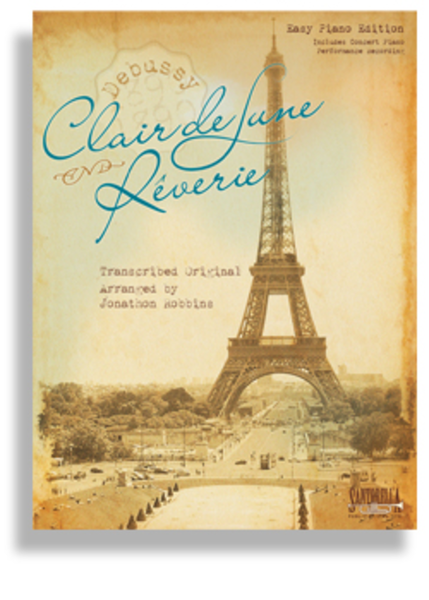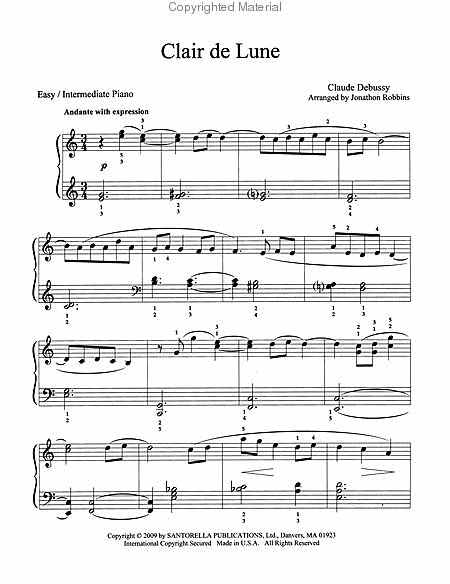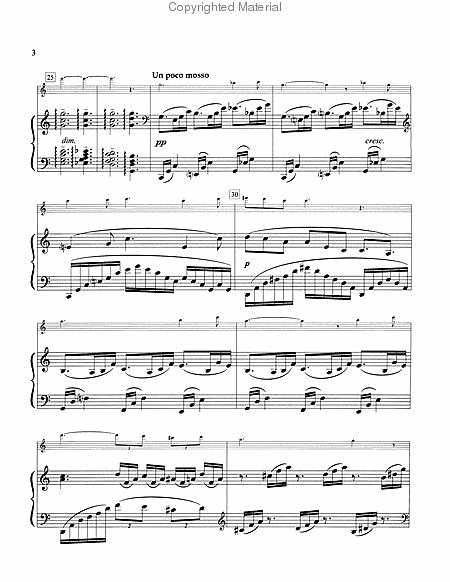Clair de Lune and Reverie for Late Beginner to Early Intermediate Piano* with Performance CD
-
Ships in 1 to 2 weeks
Details
Description
SKU: SP.TS314
Composed by Jonathon Robbins. Arranged by Jonathon Robbins. This edition: Paperback. Solo; Classical. Classical. Book and CD. With Text Language: English. Santorella Publications #TS314. Published by Santorella Publications (SP.TS314).ISBN 9781585606986. UPC: 649571003142.
Debussy's Clair de Lune and Reverie, published by Santorella Publications and arranged by Jonathon Robbins is designed for the late-beginner to early-intermediate pianist and includes a performance CD. This collection displays the exceptional talent possessed by Debussy and his impact in moving the Romantic Era towards Impressionism. Clair de Lune, the third and most famous movement from Debussy's Suite Bergamasque, was composed in 1890 when Debussy was 28 years old. However, this masterpiece was not published until 1903. Clair de Lune has been featured in films, commercials, and television shows for decades. It has most recently experienced a revival in popular movies such as Ocean's Eleven and Twilight. It is believed that Debussy was inspired by the Paul Verlaine poem of the same name. The quiet, rolling melody and fantastical nature of the mood it evokes speaks to the dream-like landscape that Verlaine references as opposed to Reverie which is indicative of his stylistic approach. Debussy once said, "Music is made up of colors and rhythms. The rest is a lot of humbug, invented by frigid imbeciles." No piece exemplifies his conviction better than Reverie. Debussy's use of melodic transitions, arpeggios, dynamics and tempo creates a feast for the senses. Although he dedicated much of his life to Orchestral, Chamber and Operatic works, he also left an indelible mark with his compositions for piano. Clair de Lune may be the most popular and recognizable piano work, but Reverie is the most colorful and significant example of the Romantic period evolving into Impressionism. Claude Debussy was born in St. Germain-en-Laye, France, on August 22, 1862. He died in Paris on March 25, 1918. Debussy is often regarded as the creator of musical impressionism although he denied being described as such. However, it is undeniable that after his early regard for Wagner vanished, he came under the influence of Mallarme, Verlains, etc., and coloring became more important to him than form. Debussy's use of the pentatonic and whole-tone scales as well as consecutive intervals of various kinds lent his music an uncommon coloring. Some feel his style lends itself to imitation, thereby halting any further developments. This sentiment is not entirely true. Successful composers like Ravel, Bartok and Stravinsky have all found inspiration in Debussy's pieces. Instead of halting any further developments in Impressionism, these composers used Debussy's works to develop musical styles such as Neo-Classicism, Expressionism, and Serial Music.



 Share
Share